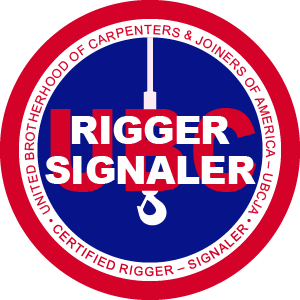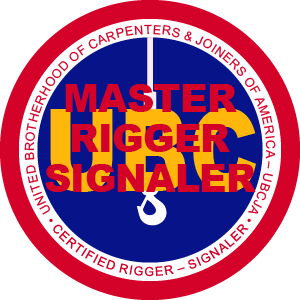

Rigger and Signaler
The CICC offers two certification programs for individuals who meet the ANSI Safety Requirements for
Rigging Qualifications and Responsibilities in the Construction Industry and OSHA 1926 Subpart CC — Cranes and Derricks in Construction.

Certified Rigger and Signaler (CRS)[NCCA Accredited Program]
The CRS program focuses on the knowledge and skills necessary to maintain safe working environments during basic rigging and signaling operations. The CRS designation indicates competence in the following areas:
- Inspects hardware, slings, and rigging equipment
- Selects the proper hardware for hoisting operations (e.g., takes into account the effect of friction on synthetic slings or hardware)
- Accounts for the effect of the configuration on the sling stress
- Performs proper hardware installation and attachment techniques
- Communicates movements to crane operator using the appropriate voice or hand signals
- Takes into account the effect of voice or hand signals on the load and the crane
- Recognizes hazards (e.g., extreme angles, pinch points, criteria for critical hoist)
- Adjusts for the gross weight of the load in hoisting operations
- Determines the load weight and center of gravity of symmetrical loads accurately
- Takes into account how shifting centers of gravity affect load stability
- Identifies proper attachment points based on center of gravity and hitch configuration
- Determines types of knot to use based on material and application
Certified Master Rigger and Signaler/Lift Director (CMRS/LD)[NCCA Accredited Program]

The CMRS/LD program is for advanced riggers and signalers, and it focuses on the knowledge and skills necessary to maintain safe working environments during advanced rigging and signaling operations. The CMRS/LD designation indicates competence in the following areas:
- Developing and implementing Lift Plans, including evaluating aspects of critical hoisting operations and determining the correct equipment, materials, personnel, personnel placement, and diagram development
- Determining proper hitch configurations for asymmetrical hoisting operations
- Taking into account and correcting for the effect of the load on the equipment prior to hoisting operations
- Anticipating and compensating for variations in D/d ratios as affected by wire construction or hardware configurations
- Handling complications with the rigging plan during hoisting operations
- Being aware that stresses on slings and rigging hardware will change when transferring weight between hoisting devices
- Recognizing when equipment, materials, ground conditions, and weather pose potential hazards and explaining why certain safety precautions should be taken
- Performing basic calculations to determine the stresses caused by changing sling angles in hoisting asymmetrical loads